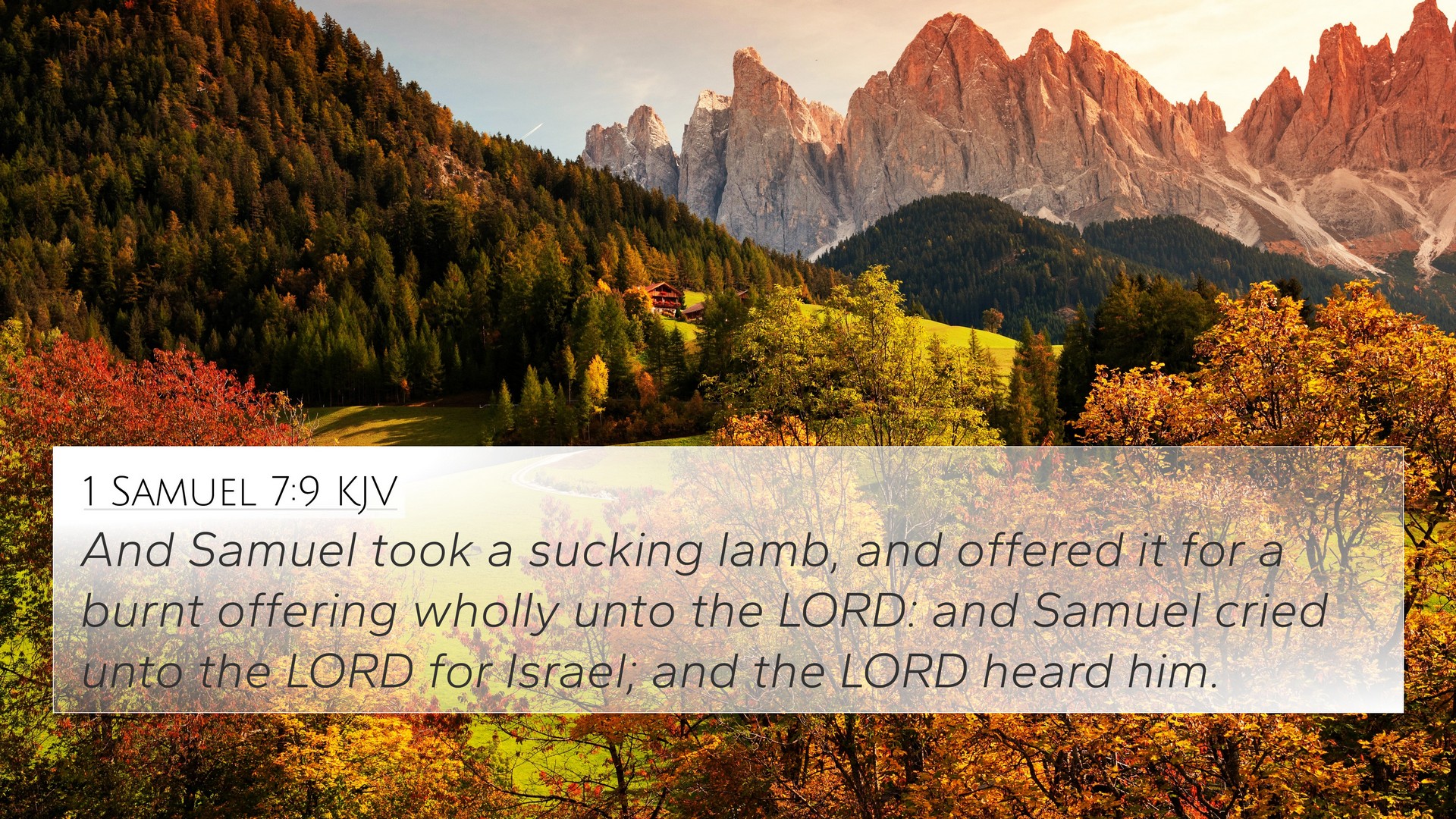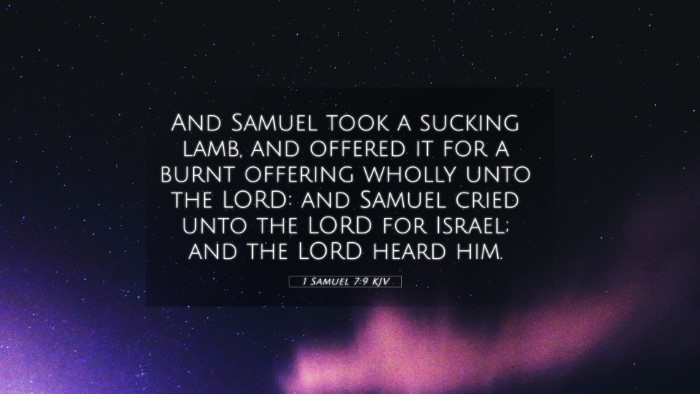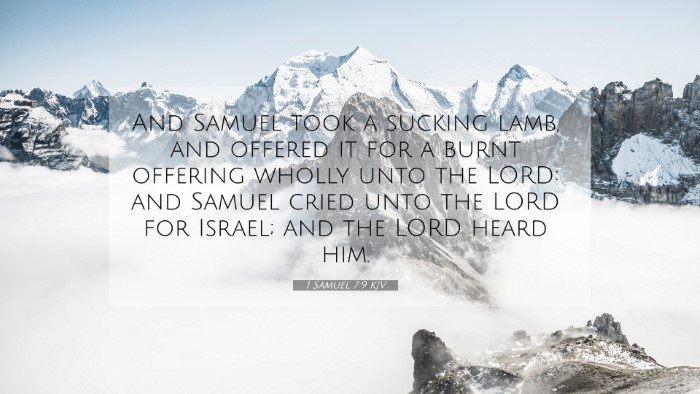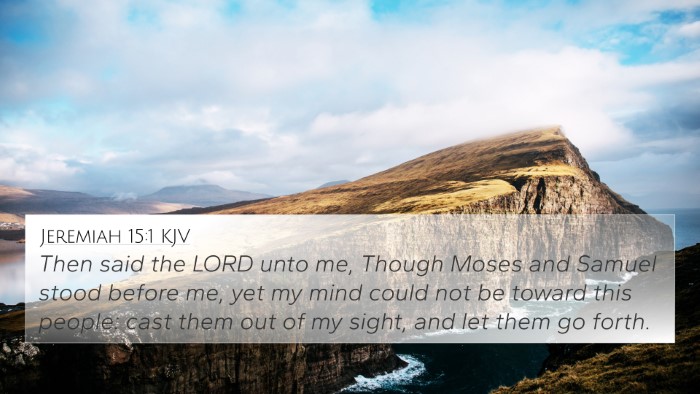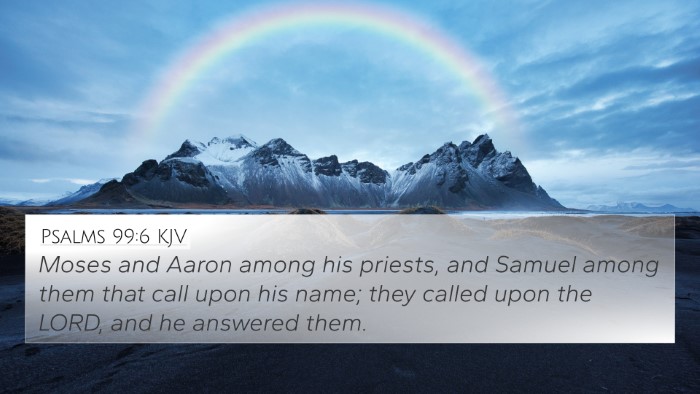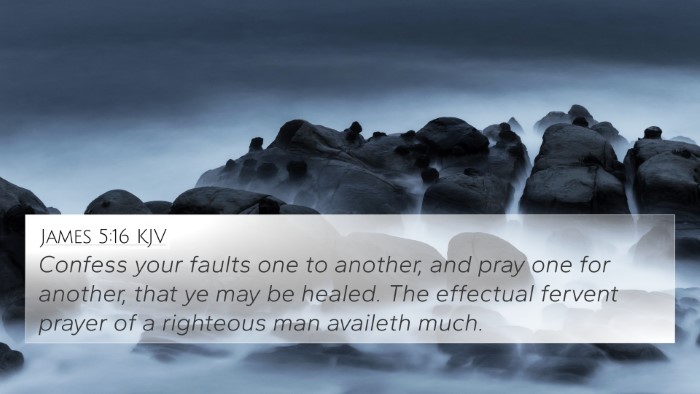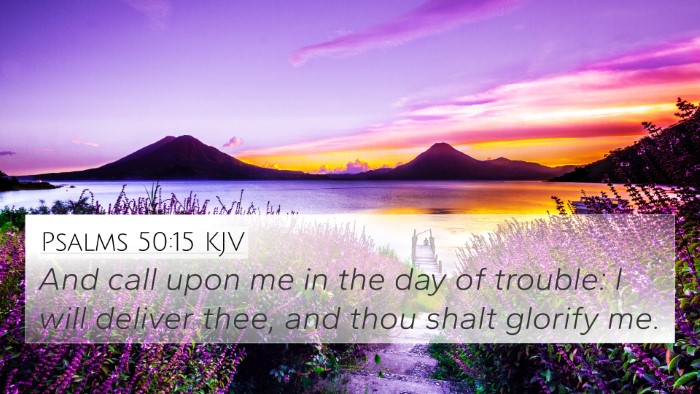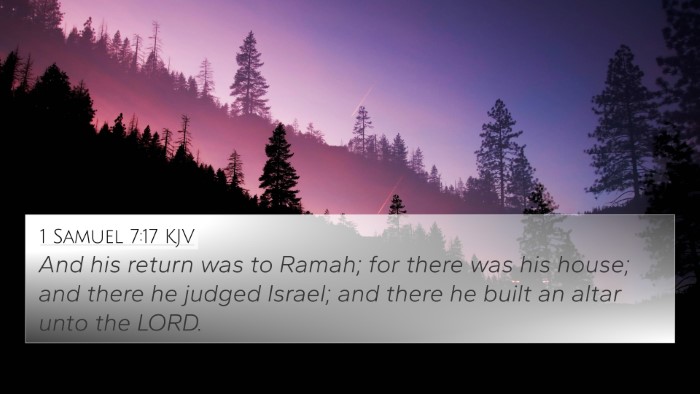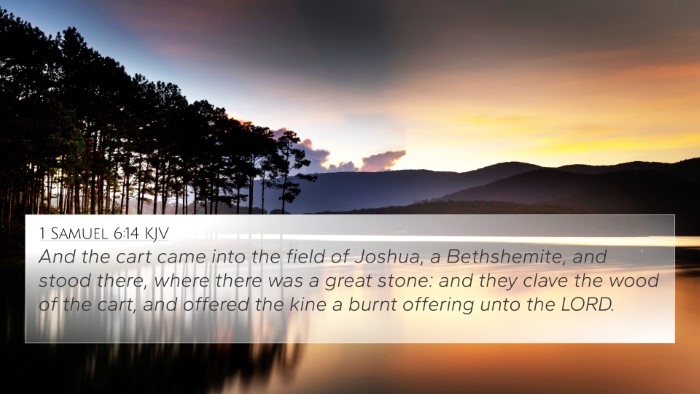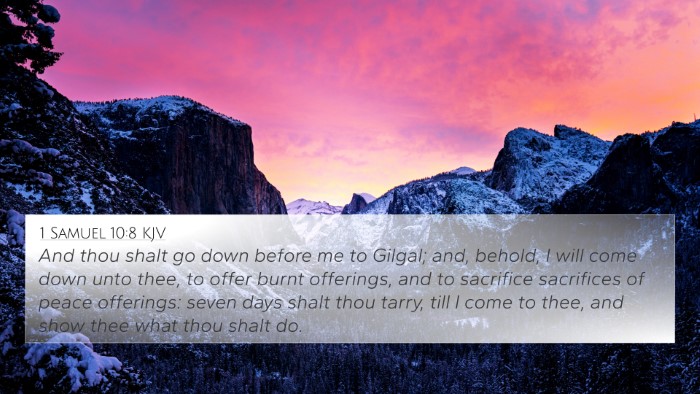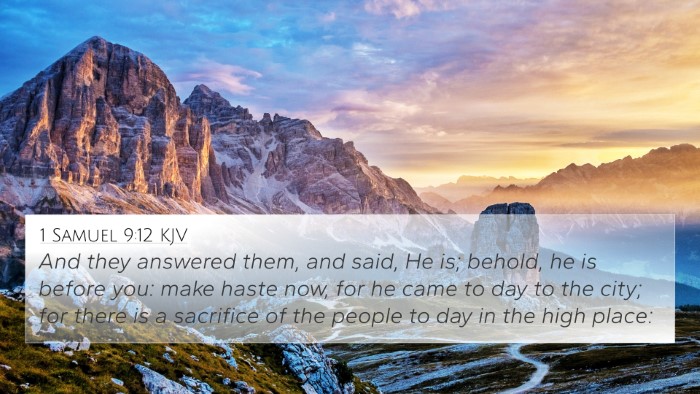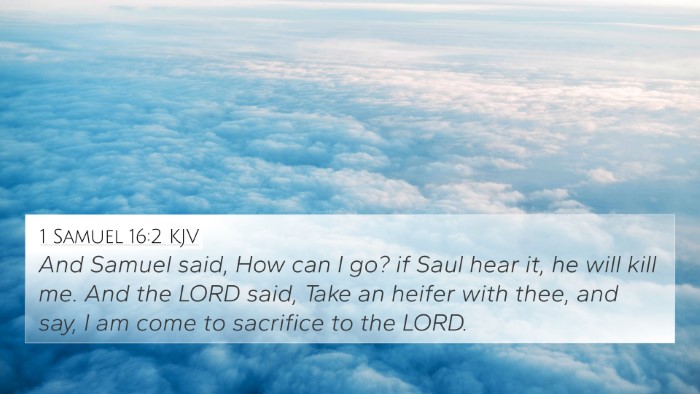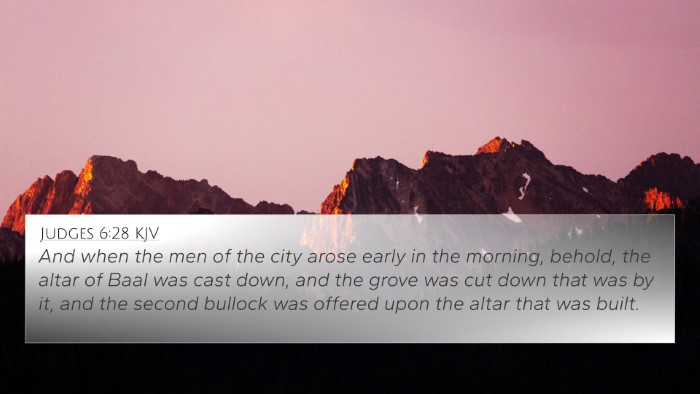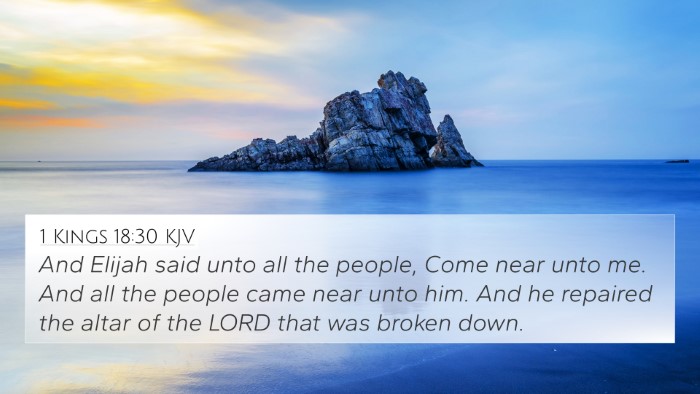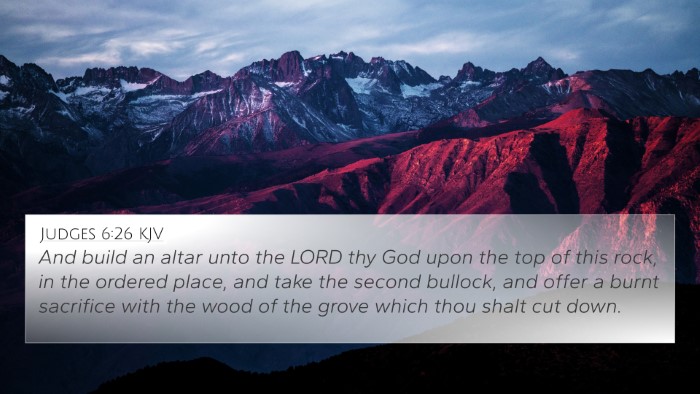Interpretation of 1 Samuel 7:9
1 Samuel 7:9 states, “And Samuel took a suckling lamb, and offered it for a burnt offering wholly unto the Lord: and Samuel cried unto the Lord for Israel; and the Lord heard him.” This profound verse encapsulates the act of sacrifice, intercession, and divine response. The interpretations drawn from various public domain commentaries provide a multifaceted understanding of this scripture.
Overview of Themes
- Acts of Sacrifice: The offering of a suckling lamb symbolizes innocence and purity, representing the ultimate sacrifice to God.
- Intercessory Prayer: Samuel’s crying out to the Lord on behalf of Israel illustrates the importance of prayer and supplication.
- Divine Response: The assurance that God hears the cries of His people showcases His mercy and attentiveness.
Commentary Insights
Matthew Henry’s Commentary
According to Henry, the act of offering a suckling lamb indicates the covenant relationship and the seriousness of worship. Samuel’s investment in the burnt offering highlights the necessity of approaching God with reverence and purity.
Albert Barnes’ Notes
Barnes emphasizes that the offering was a token of earnestness in Samuel’s plea for Israel’s deliverance. He suggests that Samuel’s leadership was marked by both sacrificial acts and earnest prayer, reflecting God’s nature of hearing and responding to His people's needs.
Adam Clarke’s Commentary
Clarke provides a detailed exposition on the significance of the lamb as a burnt offering, connecting it to later sacrificial themes in Christian theology. He interprets this moment as a pivotal demonstration of Samuel’s role as a mediator between God and Israel, foreshadowing Christ's ultimate sacrifice.
Cross-References for Deeper Understanding
1 Samuel 7:9 is enriched by cross-references that illuminate its themes and context:
- Leviticus 1:10-11: Describes the procedure for burnt offerings, linking the idea of sacrifice to holiness.
- 1 Chronicles 10:13-14: Discusses Saul’s failure as king and the need for divine guidance and intercession.
- Hebrews 9:14: Connects the significance of sacrificial blood in the New Testament context.
- Exodus 29:18-21: Establishes the requirement of a burnt offering and its significance in atoning for sin.
- 1 John 2:2: Refers to Jesus as the propitiation for our sins, tying back to the sacrificial lamb imagery.
- Psalm 66:19: Assures believers that God listens to the prayers of the righteous, resonating with God’s response to Samuel.
- James 5:16: Highlights the power of prayer, connecting Samuel's intercession to contemporary prayer practices.
- Romans 12:1: Calls believers to present their bodies as living sacrifices, echoing the essence of Samuel's act.
- Acts 7:55-56: Highlights Stephen’s prayer and vision, reinforcing the concept of divine hearing.
- Matthew 26:28: Connects the New Covenant in Christ’s blood to the sacrificial themes initiated in the Old Testament.
Thematic Connections
The connection between 1 Samuel 7:9 and other scriptures illustrates various themes, showcasing how the Bible speaks to one another:
- Prayer and Intercession: The spirit of prayer extends from Samuel to New Testament figures, emphasizing its enduring nature in a believer's life.
- Sacrifice and Atonement: The sacrificial system established in Leviticus finds its fulfillment in Christ, marking a significant theological arc throughout the scriptures.
- Divine Communication: The reassurance of God hearing prayers in both the Old and New Testaments reflects His continuous relationship with His people.
Implications for Today
The insights derived from 1 Samuel 7:9 not only point to a historical act of worship but also extend into contemporary practices of faith:
- Role of Sacrifice: Encourages believers to explore personal sacrifices in their relationship with God.
- Importance of Prayer: Reminds faith communities of the need for earnest prayer as an intercessory tool.
- Engagement with Scripture: Impacts how believers engage with the entire narrative of the Bible, valuing the connections and meanings derived from cross-referencing.
Conclusion
In conclusion, 1 Samuel 7:9 serves as a rich text for understanding the dynamics of sacrifice, prayer, and the response of the Almighty. By considering insights provided by Matthew Henry, Albert Barnes, and Adam Clarke, alongside the thematic connections with other scripture, readers are encouraged to recognize the interconnectedness of the Bible.
As you engage with this verse, consider utilizing tools for Bible cross-referencing to delve deeper into its rich meanings and implications for faith today. Combining scripture and commentary provides a holistic approach to understanding the divine narrative and encourages the exploration of bibliological relationships.
